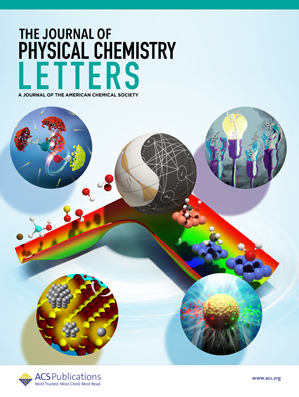Picosecond Dexter-Type Energy Transfer in Device-Grade InAs Quantum Dot Films
IF 4.8
2区 化学
Q2 CHEMISTRY, PHYSICAL
引用次数: 0
Abstract
InAs quantum dots (QDs) have emerged as a promising replacement for highly toxic lead- and mercury-based QDs for infrared optoelectronic devices. In order to understand the performance of InAs QD-devices and exploit their full potential, it is essential to elucidate the mechanisms of exciton migration or energy transfer in the films of InAs QDs, which, however, have remained lacking. Here we investigate exciton transfer dynamics in device-grade InAs QD films used in infrared photodetectors using femtosecond transient absorption spectroscopy. Interdot distances were precisely controlled by using InAs QDs of different sizes capped with ligands of varying lengths. Through minimizing interdot distances with halide ligands, we observed an energy transfer time constant as short as 1.7 ps. The distance dependence of the energy transfer rates was found to follow a Dexter-like mechanism with a damping coefficient of β = 0.31 ± 0.03 Å–1, which is a relatively small value compared to prior charge/energy transfer studies enabled by the strongly delocalized exciton wave functions of InAs QDs. These results provide hitherto lacking fundamental insights into the energy transfer/migration mechanisms inside device-grade InAs QD films, with direct relevance to optoelectronic devices ranging from photodetectors and solar cells to light-emitting diodes.

求助全文
约1分钟内获得全文
求助全文
来源期刊

The Journal of Physical Chemistry Letters
CHEMISTRY, PHYSICAL-NANOSCIENCE & NANOTECHNOLOGY
CiteScore
9.60
自引率
7.00%
发文量
1519
审稿时长
1.6 months
期刊介绍:
The Journal of Physical Chemistry (JPC) Letters is devoted to reporting new and original experimental and theoretical basic research of interest to physical chemists, biophysical chemists, chemical physicists, physicists, material scientists, and engineers. An important criterion for acceptance is that the paper reports a significant scientific advance and/or physical insight such that rapid publication is essential. Two issues of JPC Letters are published each month.
 求助内容:
求助内容: 应助结果提醒方式:
应助结果提醒方式:


